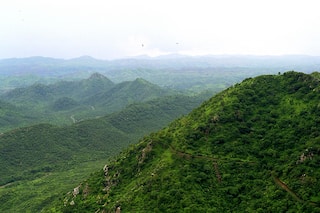James Webb Space Telescope Finds Three Debris Belts Around Nearby Young Star 'Fomalhaut': All About It
The three asteroid belts around Fomalhaut are the first asteroid belts ever seen outside the solar system in infrared light. The warm, dusty structures are more complex than the Kuiper asteroid belt.

NASA's James Webb Space Telescope (JWST) has found three belts around a nearby young star called Fomalhaut, revealing mysteries about the structures. These are the first asteroid belts ever seen outside the solar system in infrared light. The JWST, also called Webb, captured images of the warm, dusty structures around Fomalhaut, and found that they are more complex than the asteroid and Kuiper dust belts of the solar system.
The three nested belts extend out to 23 billion kilometres from Fomalhaut, NASA says on its website. This is equivalent to 150 times the distance between the Earth and the Sun. The two inner belts had never been seen before, and were revealed for the first time by Webb.
The study describing the findings was recently published in the journal Nature Astronomy.
Planetary debris disks around other stars are analogous to the asteroid and Kuiper belts in the solar system, reveal the configuration of small bodies, and provide hints for the presence of planets, the authors noted in the study.
ALSO READ | Science For Everyone: What Are Black Holes? How The Colossal Behemoths Behave, And Why
Fomalhaut is a bright star, is surrounded by three disks
One can see Fomalhaut with their naked eye because it is the brightest star in the southern constellation Piscis Austrinus. Fomalhaut is surrounded by the dusty belts which are debris from collisions of larger bodies. The debris belts can also be referred to as "debris disks''.
In a NASA statement, András Gáspár, the lead author on the paper, said he would describe Fomalhaut as the "archetype" of debris disks found elsewhere in the Milky Way galaxy, because it has components similar to those seen in the solar system.
He also said that by looking at the patterns in the rings, scientists may be able to make a little sketch of what a planetary system should look like.
ALSO READ | Star Seen Swallowing A Planet For The First Time, May Herald A Possible Fate Of Earth
How the belts around Fomalhaut might have formed
Earlier, the Hubble Space Telescope, Herschel Space Observatory, and the Atacama Large Millimetre Array (ALMA) had captured sharp images of the outermost belt of dusty structures around Fomalhaut. Through Webb's observations, scientists, for the first time, have resolved the inner belts.
Webb's Mid-Infrared Instrument (MIRI) revealed these three nested belts. Gravitational forces of unseen planets are likely to have carved out these belts.
ALSO READ | 'Peak Venus', Trio Of Moon, Morning Star And Mars — Cosmic Marvels To Look Out For In May Sky
The intermediate belt is probably shepherded by an unseen planet.
A large dust cloud discovered within the outer ring is possible evidence of another dust-creating collision.
ALSO READ | 'We Are All Made Of Stardust': How Stellar Elements Expand Into The Cosmos
In our solar system, the outer edge of the Kuiper belt is sculpted by Jupiter, while the inner edge is sculpted by Neptune.
NASA's Infrared Astronomical Satellite discovered Fomalhault's dust ring in 1983.
The authors concluded that Fomalhaut appears to be the site of a complex and possibly dynamic active planetary system.
ALSO READ | NASA InSight Study Reveals Mysteries About Mars' Liquid Iron Core, Gives Its Clearest Look Ever







































